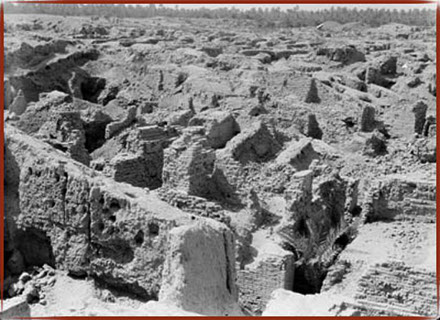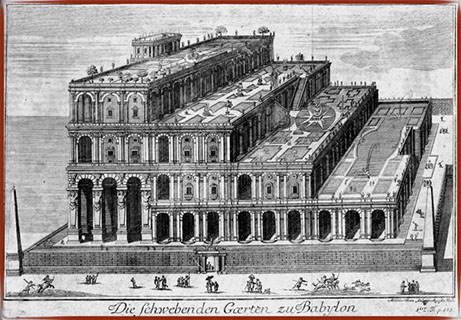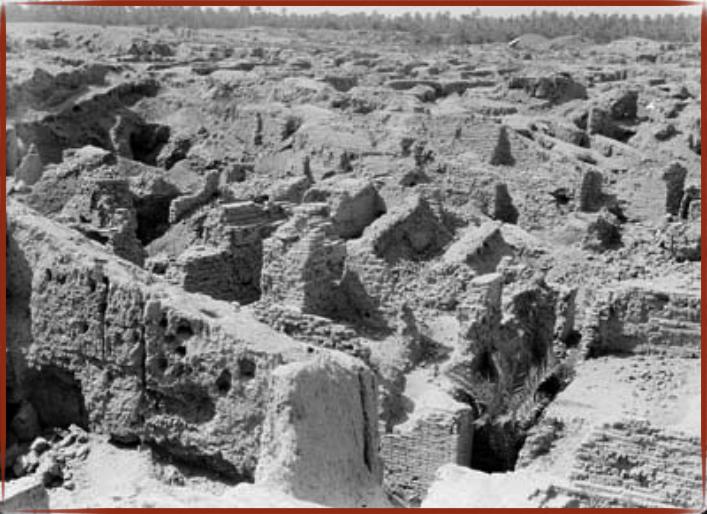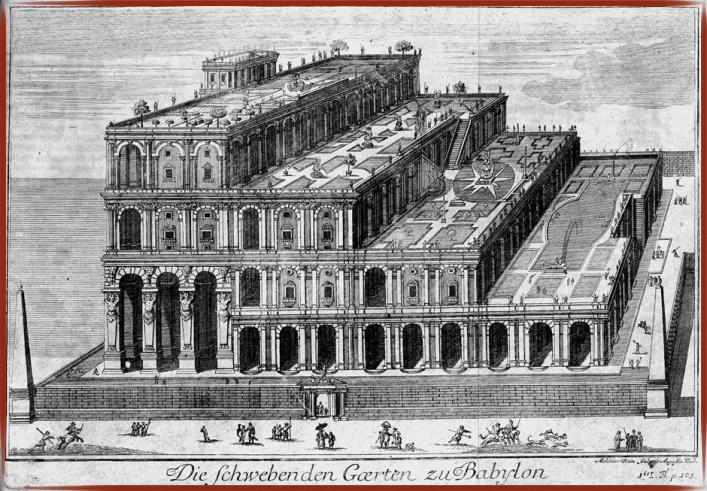
HANGING GARDENS OF BABYLON
technique
Built on a stone base of about 120 square meters. Several stepped terraces that rose up to 50 cubits (24 meters approximately). It is not yet known whether they existed or not because they do not appear written on any Babylonian records also the historian Herodotus never talked about them.
Gardens stepped terraces are made with large stones, for the bricks used in normal constructions do not resist moisture. To raise the water to irrigate the gardens, through a complicated system of irrigation, such a machine is built to a treadmill that will carry water from a well. Nebuchadnezzar thus manages to create an apparent mountain covered with lush vegetation.
The most recent Babylon archaeological excavations in the ancient city currently on Iroquoian territory uncovered the settlement of the palace. Other findings include domed construction with thick walls and irrigation near the southern palace.
A group of archeologists examined the southern area of the palace and rebuilt domed building as the Hanging Gardens. However, the Greek historian Strabo had stated that the gardens were located on the Euphrates River, while the building dome is several hundred meters away. They rebuilt the place of the palace and located the Gardens in the area stretching from the river to the palace.
On the river bank, the newly discovered walls 25 meters thick could be staggered in terraces, as described by the Greek references. However, there is little evidence for any of these theories, because nothing is mentioned in numerous Babylonian documents of the time.
In the early twentieth century German archeologist Robert Kelldeway made an excavation on Babylon. He found palaces, streets and ruins of walls. Northwest of the city, found a basement with 14 large rooms with vaulted stone ceilings. One of the basement containing a well with three rods buried in the ground, thinking they were pumping system gardens.
He also found near the Euphrates River gigantic foundations, presumably gardens. Later it was thought that was the vault that served as foundation for the gardens. But archeologist don’t know which of the two foundations that were found are the real hanging gardens.













